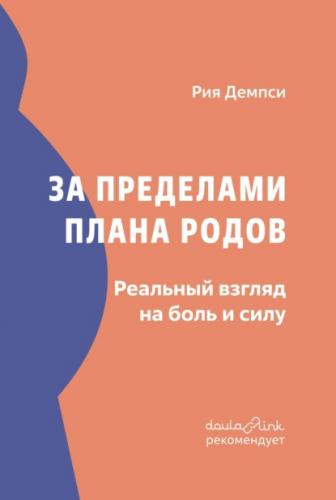11
Uvnas Moberg, K. (2014) Oxytocin: The biological guide to motherhood. Praeclarus Press.
12
Simkin, P., Ancheta, R. (2011) The Labor Progress Handbook. Wiley-Blackwell.
13
Newnham, E., McKellar, L., Pincombe, J. (2018) Towards the Humanisation of Birth: A study of epidural analgesia and hospital birth culture. Springer International Publishing, (p. 133).
14
Reed, R. (2018) Why Induction Matters. Pinter & Martin.
15
Downe, S. Byrom, S. (2019) Squaring the Circle: Normal birth research, theory and practice in a technological age. Pinter & Martin, (p. 332).
16
Australia’s mothers and babies 2017 – in brief. Australian Institute of Health and Welfare Perinatal statistics series № Cat no. PER Canberra: AIHW.
17
Dempsey, R. (2013) Birth with Confidence: Sarny choices for normal birth. Boathouse Press, (p. 41).
18
Australia’s Mothers and Babies 2017 in brief. Australian Institute of Health and Welfare Perinatal statistics series № 35. Canberra: AIHW.
19
Dahlen, H. (2010) ‘Undone by fear? Deluded by trust?’ Midwifery № 26. Elsevier, (p. 156–162).
20
Hill. M. (.2019) Give Birth Like a Feminist. HQ, an imprint of HarperCollinsPublishers Ltd.
21
‘Statement on Caesarean Section Rates.’ (2015) World Health Organisation.
22
Betran, AR, Torloni, MR., Zhang, Jet al. (2015). ‘What is the optimal rate of caesarean section at population level? A systematic review of ecologic studies. Reproductive Health. BioMedical Central.
23
ACOG: American College of Obstetricians and Gynaecologists (2014) Safe Prevention of the Primary Caesarean Obstetric Care Consensus № 1, acog.org.
24
WHO recommendations: non-clinical interventions to reduce unnecessary’ caesarean sections. Geneva: World Health Organisation; Licence:. CC BY-NC-SA 3.0 IGO.
25
‘Stemming the global caesarean epidemic.’ (2018) Lancet. Vol. Issue 101055.
26
‘Caesarean sections should only be performed when medically necessary.’ (2015) World Health Organisation.
27
Downe, S., Finlayson, K., Oladapo, O., Bonet, M., Gulmezoglu, M. (2018) What Matters to women during childbirth: A systematic qualitative review.’ PLOS ONE. Public Library of Science.
28
‘Stemming the global caesarean epidemic.’ (2018) Lancet. Vol. 392. Issue 101055.
29
Downe, S., Finlayson, K., Oladapo, O., Bonet, M., Gulmezoglu, M. (2018) What matters to women during childbirth: A systematic qualitative review.’ PLOS ONE. Public Library of Science.
30
Cole, L., Le Couteur, A., Feo, R., Dahlen, H. (2019) ‘Trying to give birth naturally was out of the question: Accounting for intervention in childbirth.’ Women and Birth. Elsevier. (32e95-e101).
31
Cole, L., Le Couteur, A., Feo, R., Dahlen, H. (2019) ‘Trying to give birth naturally was out of the question: Accounting for intervention in childbirth.’ Women and Birth. Elsevier. (32e95-e101).
32
Gibson, E. (2014) Women’s expectations and experiences with labour pain in medical and midwifery models of birth in the United States.’ Women and Birth. Vol. 27, 3. Elsevier, (pp. 185–189).
33
Mander, R. (201 1) Pain in Childbearing and its Control: Key issues for. midwives and women. Wiley-Blackwell.
34
‘Care in Normal Birth: A practical guide’. (1996) World Health Organisation.
35
Gallo, A. (2018) ‘Leaving Luck Out of Birth – How many of us are undermining the hard work of a cultivated positive birth experience.’ Blog.
36
Hill, M. (2019) Give Birth Like a Feminist. HQ, an imprint of HarperCollinsPublishers Ltd.
37
Dekker, R. (2018) Evidence Based Birth evidencebasedbirth.com.
38
Fahy, K., Foureur, M., Hastie, C. (2008) Birth Territory and Midwifery Guardianship. Butterworth Heinemann Elsevier.
39
Fahy, K., Foureur, M., Hastie, C. (2008) Birth Territory and Midwifery Guardianship. Butterworth Heinemann Elsevier.
40
Fahy., K. Foureur, M. Hastie. C. (2008) Birth territory and Midwifery Cuo’itiawhip. Butterworth Heinemann Elsevier.
41
McLachlan, Forster, D., Davey, T. Biro, Albers, L., Flood, M. Oats, Waldenstrom, U. (2012) Effects of continuity of care by a primary midwife (caseload midwifery) on caesarean section rates in women ot low obstetric risk: the COSMOS randomised controlled trial.’ Blackwell Publishing.
42
Tracy. S., Hart. D., Tracy, M., Allen, J., Forti, A., Hall, B., et al. (2013) Caseload Midwifery care versus standard maternity care women of any risk: M@NGO a randomised controlled trial.
43
Bohran, M., Hofmeyr, G., Sakala, C., Fukuzawa, R., Cuthbert, A. (2017) Continuous support for women during childbirth.’ Cochrane Systematic Review. The Cochrane Database.
44
Sandall. J., Soltani, H., Gates, S., Shennan, A., Devane, D. (2016) ‘Midwife-led continuity models versus other models of care for childbearing women.’ Cochrane Systematic Review. The Cochrane Database.
45
Butterworth. K., Margolis, Z. (2019) ‘Maternity’s «gold standard» of care now-available in rural Queensland town. ABC news. ABC online.
46
Simpson, M., Schmied, V, Dickson, C., Dahlen, H. (2018). ‘Postnatal post-traumatic stress: An integrative review.’ Wom and Birth. Vol. 31, 5. Elsevier, (pp. 367–379).
47
Butterworth,
